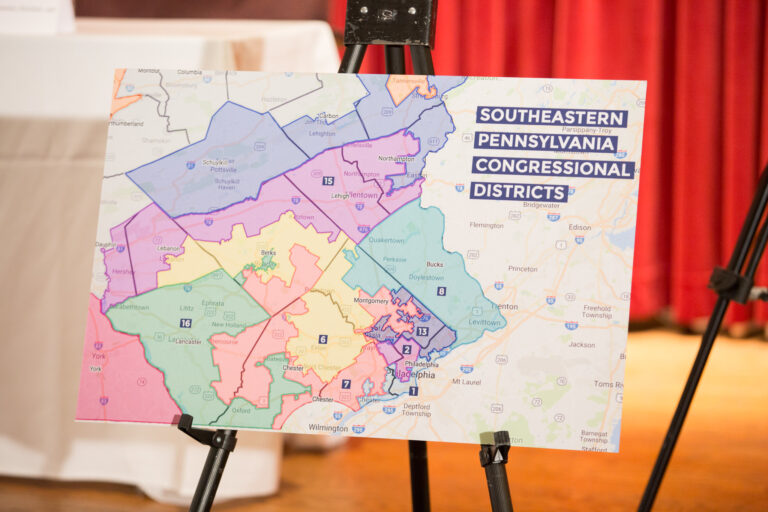In National Labor Relations Board v. Noel Canning, the Supreme Court will consider when and how the President may appoint members of the National Labor Relations Board (NLRB or Board). Ordinarily, the President fills vacancies on the NLRB by appointing new Board members with the advice and consent of the Senate. However, the Recess Appointments Clause of the Constitution provides that “[t]he President shall have Power to fill up all Vacancies that may happen during the Recess of the Senate, by granting Commissions which shall expire at the End of their next Session.” Noel Canning presents three questions about the powers granted by the Recess Appointments Clause:
1) Whether the President’s recess-appointment power may be exercised during an intrasession recess (a recess that occurs within a session of the Senate), or only during an intersession recess (a recess that occurs between sessions of the Senate).
2) Whether the President’s recess-appointment power may be exercised to fill any vacancies that exist during a recess, or only those vacancies that first arise during the recess.
3) Whether the President’s recess-appointment power may be exercised when the Senate is convening every three days in pro-forma sessions.
This post will outline the facts of Noel Canning, the D.C. Circuit’s opinion, and the central arguments that the parties have presented to the Supreme Court.
Factual Background
The NLRB consists of five members who serve five-year terms. Usually, the members are appointed by the President with the advice and consent of the Senate. Under federal law, the NLRB needs a three-member quorum to adjudicate cases involving unfair labor practices. Thus, when three or more seats on the NLRB are vacant, the Board lacks the power to issue legally binding opinions.
On January 3, 2012, the First Session of the 112th Congress ended and the Second Session began. Nevertheless, between January 3 and January 23, the Senate operated under an adjournment order, which provided that the Senate would convene every three days “for pro forma sessions only, with no business conducted.”
On January 4, 2012, the President filled three vacancies on the NLRB. Crucially, he did not seek the advice and consent of the Senate before he made the appointments. Instead, he invoked the Recess Appointments Clause of the Constitution.
A few weeks later, on February 8, 2012, a three-member panel of the NLRB held that Noel Canning committed an unfair labor practice when it refused to execute a written collective bargaining agreement with the International Brotherhood of Teamsters Local 760. Noel Canning challenged the panel’s decision before the D.C. Circuit. It argued that the President’s January 4th appointments to the NLRB were invalid, and, as a result, the NLRB did not have the quorum required to resolve a labor dispute on February 8.
D.C. Circuit Opinion
The D.C. Circuit agreed that the President’s January 4th appointments to the NLRB were constitutionally invalid. The court held that the President’s recess-appointment power can only be exercised during an intersession recess. It explained that the Recess Appointments Clause gives the President the authority to fill vacancies that “may happen during the Recess of the Senate” (emphasis added). The fact that the Clause refers to “the Recess” instead of “a recess” suggests that Clause gives the President limited authority to make appointments during “the Recess” that occurs between sessions of the Senate. The court argued that this interpretation of the Clause is consistent with the structure of the Constitution. The structure suggests that, to the extent possible, the President must make appointments with the advice and consent of the Senate. If, however, the Senate is unavailable to give advice, the President may invoke his “auxiliary” powers under the Recess Appointments Clause. If the President could invoke these “auxiliary” powers during any intrasession break, the recess-appointment power would vitiate the general rule that the President must make appointments with the advice and consent of the Senate; the President could simply wait for an intrasession break to fill vacancies in the executive branch. In the court’s view, the framers could not have intended that the Recess Appointments Clause would give the President so much power.
The court also held that the President may only exercise his recess-appointment power to fill vacancies that first arise during the Senate’s recess. The court explained that, at the time the Constitution was ratified, a vacancy that “happen[ed] during the Recess of the Senate” was understood to be a vacancy that arose during the recess of the Senate. The court bolstered this argument by observing that, if the Recess Appointments Clause did give the President authority to fill all vacancies that exist during a recess, then a “President at odds with the Senate over nominations would never have to submit his nominees for confirmation. He could simply wait for a ‘recess’ (however defined) and then fill up all vacancies.” Once again, the court suggested that the framers could not have intended to give the President so much power over appointments.
The parties do not dispute that, on January 4, the Senate was not in an intersession recess. Moreover, the court explained, even if the Senate were in a recess, none of the NLRB positions that the President filled on January 4 became vacant during that recess. Thus, the President did not have the constitutional authority to make the January 4th appointments.
Judge Griffith concurred in the judgment. He agreed that the President’s January 4th appointments were constitutionally invalid because they were not made during an intersession recess of the Senate. As a result, he would not have decided whether the appointments were also invalid because the President filled vacancies that did not arise during the recess of the Senate.
Arguments Before the Supreme Court
NLRB’s Arguments
The NLRB’s primary argument to the Supreme Court is that affirming the court of appeals’ decision would eviscerate long-accepted recess-appointment practices, and thereby upset a separation-of-powers equilibrium that the executive and legislative branches reached decades ago. The Board also contends that accepted recess-appointment practices are consistent with the text and purposes of the Recess Appointments Clause.
Essentially, the NLRB makes three textual arguments. First, looking to the ordinary meaning of the term “recess” (both at the time of the framing and today), the NLRB suggests that the Recess Appointments Clause allows the President to make temporary appointments during any “period of cessation from [the Senate’s] usual work.” Second, the Board contends that it is reasonable to read the phrase “Vacancies that may happen during the Recess” to include vacancies that happen to exist during the recess. Thus, Recess Appointments Clause allows the President to fill any vacancies that exist during the recess of the Senate. Third, the Board argues that the Senate is in “recess” when it has “suspended business” (i.e. when it cannot receive communications from the President or participate in the appointment process). As a result, the Senate was in “recess” between January 3 and January 23, despite the fact that it was meeting every three days for pro forma sessions.
Finally, the NLRB argues that its reading of the Recess Appointments Clause is consistent with the purposes of the Clause. On the NLRB’s view, the Clause was meant to give the President the authority to fill vacancies quickly so that he can always have the staff he needs to fulfill his constitutional duty to execute the laws faithfully. Thus, the Clause should be read to give the President the authority to make appointments whenever: (1) he needs to fill vacancies in the executive branch; and (2) the Senate is in a recess that renders it unavailable to give advice and consent.
The International Brotherhood of Teamsters’ Local 760 has made similar arguments as a respondent supporting the petitioner.
Noel Canning’s Arguments
In response to the Board’s arguments, Noel Canning has presented four arguments of its own. First, the structure of the Recess Appointments Clause suggests that the Senate alternates between taking its “Recess” and being in “Session.” The parties agree that a “Session” of the senate is a formal, enumerated session. Thus, the term “Recess” must refer to the formal break that occurs between Senate sessions.
Second, echoing the D.C. Circuit, Noel Canning argues that the framers understood a vacancy that “happen[ed] during the Recess of the Senate” to be a vacancy that arose during the recess of the Senate. Thus, the Recess Appointments Clause only gives the President the power to fill vacancies that come into being during “the Recess” of the Senate.
Third, Noel Canning contends that that the Senate must be able to determine when it was in session, and it determined that it was in session every three days between January 3 and January 23. Since the parties agree that three-day breaks in Senate proceedings do not constitute a recess, the Senate could not have been in recess when the President made his January 4th appointments to the NLRB.
Finally, Noel Canning insists that the Constitution cannot be read to provide an escape hatch from the advice-and-consent requirement. The Constitution makes clear that, in most cases, the President must make appointments with the advice and consent of the Senate. The Recess Appointments Clause cannot be read so broadly that it allows the President to avoid this requirement whenever he cannot convince the Senate to support his appointment decisions.
Conclusion
Even after the change in the Senate’s filibuster rules, Noel Canning will play a hugely important role in determining the balance of power between the executive and legislative branches, and the ways in which the executive may cope with partisan gridlock. More than 20 amicus briefs have been filed as the Supreme Court prepares to hear oral arguments this Monday. Onlabor will have continuing coverage of Noel Canning next week.






Daily News & Commentary
Start your day with our roundup of the latest labor developments. See all
December 15
Advocating a private right of action for the NLRA, 11th Circuit criticizes McDonnell Douglas, Congress considers amending WARN Act.
December 12
OH vetoes bill weakening child labor protections; UT repeals public-sector bargaining ban; SCOTUS takes up case on post-arbitration award jurisdiction
December 11
House forces a vote on the “Protect America’s Workforce Act;” arguments on Trump’s executive order nullifying collective bargaining rights; and Penn State file a petition to form a union.
December 8
Private payrolls fall; NYC Council overrides mayoral veto on pay data; workers sue Starbucks.
December 7
Philadelphia transit workers indicate that a strike is imminent; a federal judge temporarily blocks State Department layoffs; and Virginia lawmakers consider legislation to repeal the state’s “right to work” law.
December 5
Netflix set to acquire Warner Bros., Gen Z men are the most pro-union generation in history, and lawmakers introduce the “No Robot Bosses Act.”